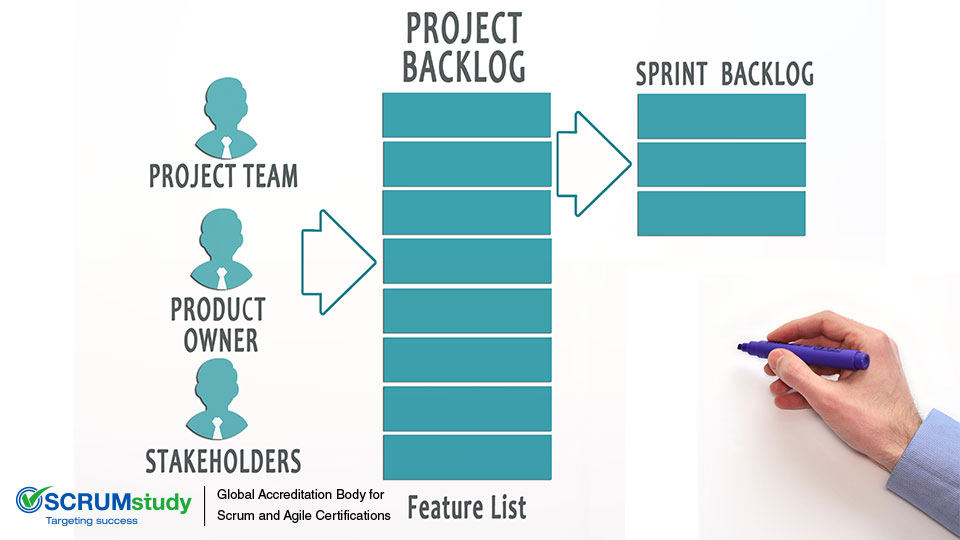Scrum methodology communication
Posted by SCRUMstudy® on July 17, 2024
Categories: Agile Product Backlog Product Development Scrum Sprint
Scrum methodology emphasizes clear and frequent communication among team members to ensure transparency, alignment, and collaboration. Daily stand-up meetings, also known as daily scrums, provide a platform for team members to share updates on their progress, discuss any obstacles, and plan their activities for the day. This regular communication helps in identifying and addressing issues promptly, facilitating continuous improvement and ensuring that the team remains focused on delivering value. Additionally, Scrum ceremonies like sprint planning, sprint review, and sprint retrospective further enhance communication by setting clear goals, reviewing progress, and reflecting on the team's performance.
In Scrum methodology, sprint ceremonies are crucial events that ensure effective collaboration and progress tracking within the development team.
What is a Sprint Backlog? Is it a baseline, a record or a report? Baseline is a project document, which, defines aspects of the project and, once approved, is subject to change control. It is used to measure a project’s actual performance as against planned targets. A record maintains information on the progress of the project. A report provides snapshots of the status of different aspects of a project at any given point of time or for a given duration.
To answer this question, we need to understand what a Sprint Backlog is, its purpose and composition. The Scrum Team creates the Sprint Backlog and Sprint Burndown Chart using the User Stories, and the Updated Task List during Sprint Planning Meeting. During Sprint Planning Meeting, the User Stories, which are approved, estimated, and committed during the Create, Estimate, and Commit User Stories process, are taken up for discussion by the Scrum Team. Each Scrum Team member also uses Updated Task List to select the tasks they plan to work on in the Sprint, based on their skills, and experience. The list of the tasks to be executed by the Scrum Team in the upcoming Sprint is called the Sprint Backlog.
It is common practice in Scrum that the Sprint Backlog is represented on a Scrumboard or task board, which provides a constantly visible depiction of the status of the User Stories in the backlog. Also included in the Sprint Backlog are any risks associated with the various tasks. Any mitigating activities to address the identified risks would also be included as tasks in the Sprint Backlog. Once the Sprint Backlog is finalized and committed to by the Scrum Team, new user stories should not be added – however, tasks that might have been missed or overlooked from the committed user stories may need to be added. If new requirements arise during a Sprint, they will be added to the overall Prioritized Product Backlog and included in a future Sprint, depending on their criticality, and urgency.
Another tool associated with the Sprint Backlog is the Sprint Burndown Chart. It is a graph that depicts the amount of work remaining in the ongoing Sprint. The initial Sprint Burndown Chart is accompanied by a planned burndown. The Sprint Burndown Chart should be updated at the end of each day as work is completed. This chart shows the progress that has been made by the Scrum Team and also allows for the detection of estimates that may have been incorrect. If the Sprint Burndown Chart shows that the Scrum Team is not on track to finish the tasks in the Sprint on time, the Scrum Master should identify any obstacles or impediments to successful completion, and try to remove them. A related chart is a Sprint Burnup Chart. Unlike the Sprint Burndown Chart which shows the amount of work remaining, the Sprint Burnup Chart depicts the work completed as part of the Sprint.
So, it is difficult to categorize the Sprint Backlog as a baseline, record or a report. And as Scrum professes minimum documentation, Sprint Backlog fulfills purposes of more than one project document. For more information on Scrum framework, you can read the Scrum Body of Knowledge (SBOK Guide). It can be downloaded for free in SCRUMstudy website: http://www.scrumstudy.com/download-free-buy-SBOK.asp

